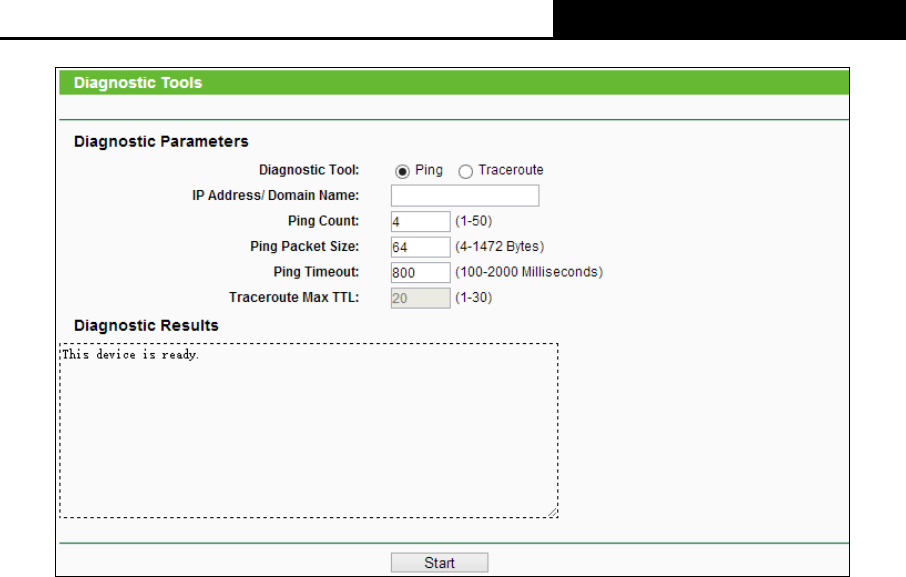User's Manual
Table Of Contents
- Package Contents
- Chapter 1. Introduction
- Chapter 2. Connecting the Router
- Chapter 3. Quick Installation Guide
- Chapter 4. Configuration for Standard Wireless Router Mode
- Chapter 5. Configuration for Access Point Mode
- Chapter 6. Configuration for Repeater Mode
- Chapter 7. Configuration for Client Mode
- Chapter 8. Configuration for Hotspot Router Mode
- Appendix A: FAQ
- Appendix B: Configuring the PC
- Appendix C: Specifications
- Appendix D: Glossary

TL-WR810N
300Mbps Wireless N Mini Router
- 158 -
Figure 6-31 Diagnostic Tools
Diagnostic Tool - Check the radio button to select one diagnostic tool.
• Ping - This diagnostic tool troubleshoots connectivity, reachability, and name resolution to
a given host or gateway.
• Traceroute - This diagnostic tool tests the performance of a connection.
Note:
You can use Ping/Traceroute to test both numeric IP address or domain name. If
pinging/tracerouting the IP address is successful, but pinging/tracerouting the domain name is not,
you might have a name resolution problem. In this case, ensure that the domain name you are
specifying can be resolved by using Domain Name System (DNS) queries.
IP Address/Domain Name - Type the destination IP address (e.g. 202.108.22.5) or Domain
name (e.g.http://www.tp-link.com).
Pings Count - The number of Ping packets for a Ping connection. The default is 4.
Ping Packet Size - The size of Ping packet. The default is 64.
Ping Timeout - Set the waiting time for the reply of each Ping packet. If there is no reply in
the specified time, the connection is overtime. The default is 800.
Traceroute Max TTL - The max number of hops for a Traceroute connection. The default is
20.
Click Start to check the connectivity of the Internet.
The Diagnostic Results page displays the result of diagnosis.
If the result is similar to the following screen, the connectivity of the Internet is fine.










